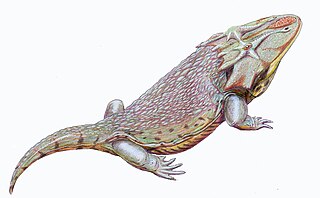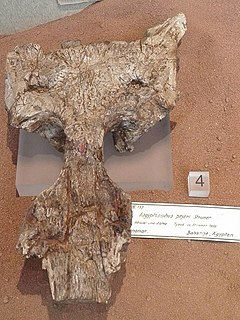Genus is a taxonomic rank used in the biological classification of living and fossil organisms as well as viruses. In the hierarchy of biological classification, genus comes above species and below family. In binomial nomenclature, the genus name forms the first part of the binomial species name for each species within the genus.

Cissa is a genus of relatively short-tailed magpies, sometimes known as hunting cissas, that reside in the forests of tropical and subtropical southeast Asia and adjacent regions. The four species are quite similar with bright red bills, a mainly green plumage, black mask, and rufous wings. Due to excess exposure to sunlight, they often appear rather turquoise in captivity. They are carnivorous, and mainly feed on arthropods and small vertebrates.

Alexander Georg von Bunge was a Russian botanist. He is best remembered for scientific expeditions into Asia and especially Siberia.
Friedrich Boie was a German entomologist, herpetologist, ornithologist, and lawyer. He was born at Meldorf in Holstein and died at Kiel. Friedrich Boie was the brother of Heinrich Boie.

Echinopsis is a large genus of cacti native to South America, sometimes known as hedgehog cactus, sea-urchin cactus or Easter lily cactus. One small species, E. chamaecereus, is known as the peanut cactus. The 128 species range from large and treelike types to small globose cacti. The name derives from echinos hedgehog or sea urchin, and opsis appearance, a reference to these plants' dense coverings of spines.

Progne is a genus of birds. The genus name refers to Procne (Πρόκνη), a mythological girl who was turned into a swallow to save her from her husband. She had killed their son to avenge the rape of her sister.

Campylodoniscus is a genus of titanosaur sauropod dinosaur from the Late Cretaceous Period of what is now Argentina.

Traversodon is an extinct genus of cynodonts. It was a relative of the ancestor to modern mammals.

Carl Daniel Friedrich Meissner was a Swiss botanist.

Hypothymis is a genus of birds in the family Monarchidae.

Siebenrockiella is a small genus of black marsh turtles. It used to be monotypic but now has two species with the addition of the Philippine forest turtle. The genus was originally erected in 1869 by John Edward Gray under the name Bellia, commemorating Thomas Bell, but this name is a junior homonym of Bellia Milne-Edwards, 1848, a crustacean genus. The replacement name, Siebenrockiella, was published in 1929 by Wassili Adolfovitch Lindholm, and commemorates Friedrich Siebenrock.
Friedrich (Fritz) Wilhelm Ludwig Kränzlin was a botanist associated with the Natural History Museum (BM).

Calosoma is a genus of large ground beetles that occur primarily throughout the Northern Hemisphere, and are referred to as caterpillar hunters or caterpillar searchers. Many of the 167 species are largely or entirely black, but some have bright metallic coloration. They produce a foul-smelling spray from glands near the tip of the abdomen. They are recognizable due to their large thorax, which is almost the size of their abdomen and much wider than their head.

Dasyceps is an extinct genus of zatracheidid temnospondyl from the early Permian of England.

Lepicerus is a genus of myxophagan beetles containing three described species in the family Lepiceridae; it is the only extant genus in the family, with another genus, Lepiceratus only known from fossils. Extant species occur in the Neotropics, from Mexico south to Venezuela and Ecuador. Fossils referrable to the genus are known from the early Late Cretaceous of Southeast Asia.

Aegyptosuchus is an extinct genus of aegyptosuchid eusuchian crocodyliform. This taxon was coined by Kuhn (1936) as a monotypic family-level taxon redundant with the Cretaceous genus Aegyptosuchus. Carroll (1988) classified the genus in the family Stomatosuchidae. Only one species is descript, Aegyptosuchus peyeri.
Christian Friedrich Lessing was a German botanist who was a native of Groß Wartenberg, Niederschlesien. He was a brother to painter Carl Friedrich Lessing (1808–1880), and a grandnephew of poet Gotthold Ephraim Lessing (1729–1781).
Arkanserpeton is an extinct genus of dissorophoid temnospondyl represented by a fragmentary isolated femur and an isolated neural arch. It is not considered to be sufficiently diagnostic and was designated as a nomen dubium by Schoch & Milner (2014).
Karl Suessenguth was a German botanist.
This page is based on this
Wikipedia article Text is available under the
CC BY-SA 4.0 license; additional terms may apply.
Images, videos and audio are available under their respective licenses.












